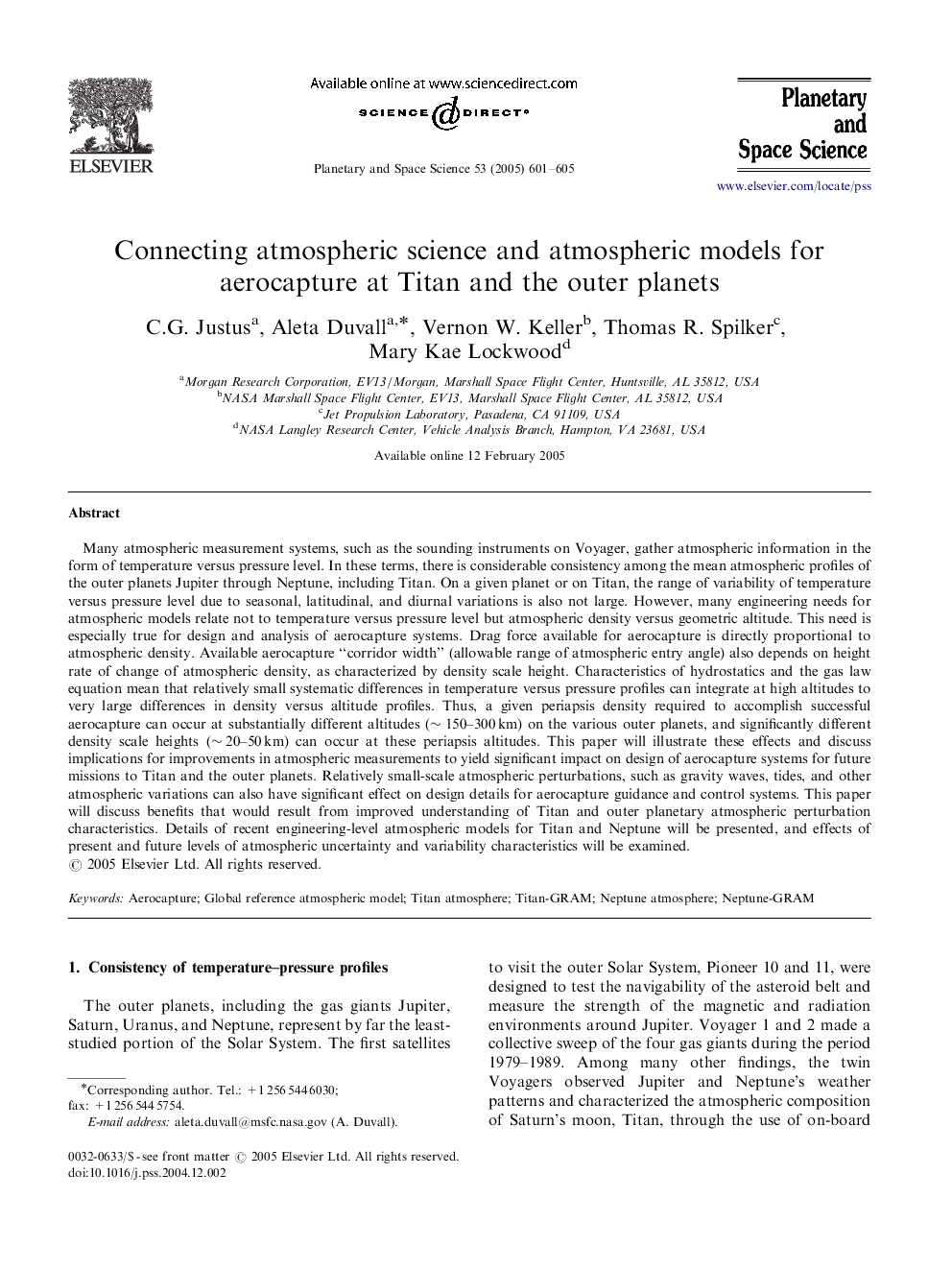| کد مقاله | کد نشریه | سال انتشار | مقاله انگلیسی | نسخه تمام متن |
|---|---|---|---|---|
| 10705375 | 1022360 | 2005 | 5 صفحه PDF | دانلود رایگان |
عنوان انگلیسی مقاله ISI
Connecting atmospheric science and atmospheric models for aerocapture at Titan and the outer planets
دانلود مقاله + سفارش ترجمه
دانلود مقاله ISI انگلیسی
رایگان برای ایرانیان
کلمات کلیدی
موضوعات مرتبط
مهندسی و علوم پایه
علوم زمین و سیارات
فیزیک زمین (ژئو فیزیک)
پیش نمایش صفحه اول مقاله

چکیده انگلیسی
Many atmospheric measurement systems, such as the sounding instruments on Voyager, gather atmospheric information in the form of temperature versus pressure level. In these terms, there is considerable consistency among the mean atmospheric profiles of the outer planets Jupiter through Neptune, including Titan. On a given planet or on Titan, the range of variability of temperature versus pressure level due to seasonal, latitudinal, and diurnal variations is also not large. However, many engineering needs for atmospheric models relate not to temperature versus pressure level but atmospheric density versus geometric altitude. This need is especially true for design and analysis of aerocapture systems. Drag force available for aerocapture is directly proportional to atmospheric density. Available aerocapture “corridor width” (allowable range of atmospheric entry angle) also depends on height rate of change of atmospheric density, as characterized by density scale height. Characteristics of hydrostatics and the gas law equation mean that relatively small systematic differences in temperature versus pressure profiles can integrate at high altitudes to very large differences in density versus altitude profiles. Thus, a given periapsis density required to accomplish successful aerocapture can occur at substantially different altitudes (â¼150-300Â km) on the various outer planets, and significantly different density scale heights (â¼20-50Â km) can occur at these periapsis altitudes. This paper will illustrate these effects and discuss implications for improvements in atmospheric measurements to yield significant impact on design of aerocapture systems for future missions to Titan and the outer planets. Relatively small-scale atmospheric perturbations, such as gravity waves, tides, and other atmospheric variations can also have significant effect on design details for aerocapture guidance and control systems. This paper will discuss benefits that would result from improved understanding of Titan and outer planetary atmospheric perturbation characteristics. Details of recent engineering-level atmospheric models for Titan and Neptune will be presented, and effects of present and future levels of atmospheric uncertainty and variability characteristics will be examined.
ناشر
Database: Elsevier - ScienceDirect (ساینس دایرکت)
Journal: Planetary and Space Science - Volume 53, Issue 5, April 2005, Pages 601-605
Journal: Planetary and Space Science - Volume 53, Issue 5, April 2005, Pages 601-605
نویسندگان
C.G. Justus, Aleta Duvall, Vernon W. Keller, Thomas R. Spilker, Mary Kae Lockwood,